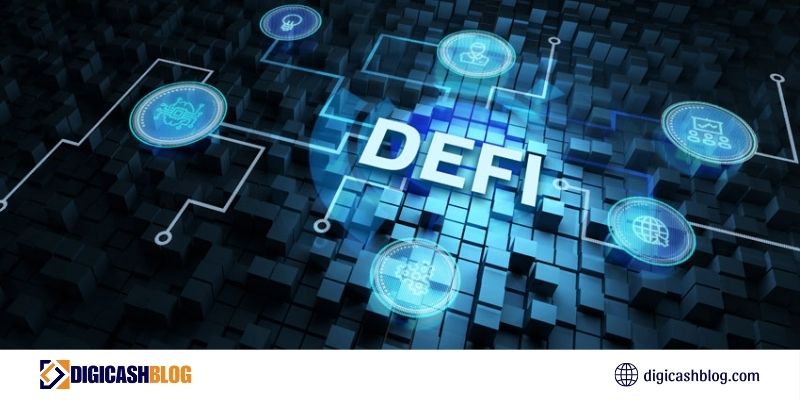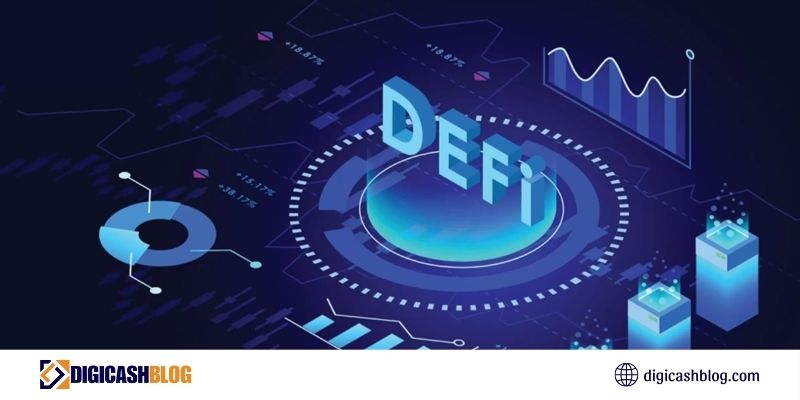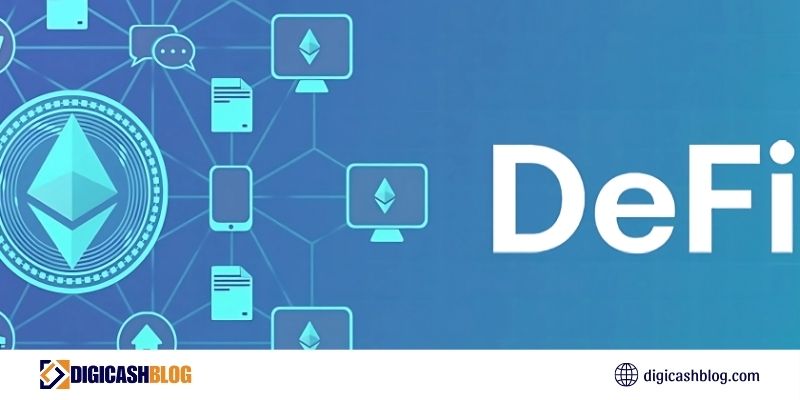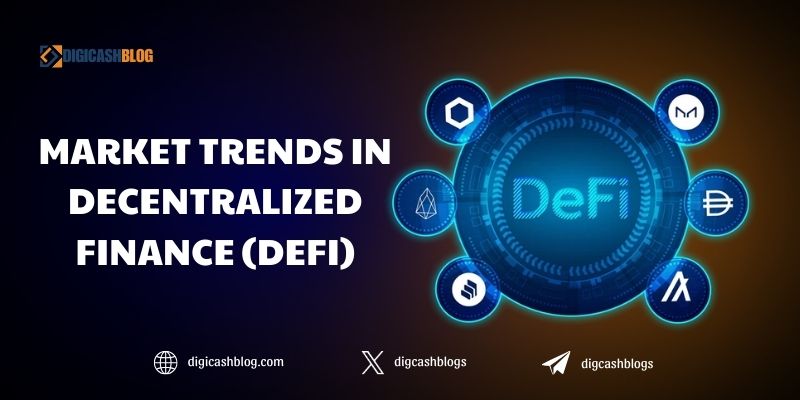The rapidly evolving landscape of market trends in decentralized finance (DeFi) is reshaping the global financial ecosystem. DeFi is revolutionizing traditional financial services by offering decentralized alternatives for lending, borrowing, trading, and asset management. As DeFi continues to gain momentum, various trends are emerging, influencing how investors, developers, and institutions engage with the market.
The decentralized finance sector has seen exponential growth over the past few years, driven by innovations in smart contracts, blockchain technology, and the adoption of Web3. In this article, we will explore the most significant market trends in decentralized finance (DeFi), their impact on the industry, and the challenges that lie ahead.

Institutional Adoption of DeFi
Increasing Institutional Interest
One of the most significant market trends in decentralized finance (DeFi) is the growing interest from institutional investors. Hedge funds, venture capital firms, and financial institutions are recognizing the potential of DeFi as a means to enhance their portfolios and generate higher yields. The integration of DeFi solutions into traditional finance is leading to new hybrid financial models that combine centralized oversight with decentralized efficiency.
Regulatory Considerations for Institutions
With increasing institutional participation, regulatory bodies are paying closer attention to DeFi. Compliance frameworks, Know Your Customer (KYC) protocols, and Anti-Money Laundering (AML) measures are being developed to ensure security and transparency in the DeFi space. While regulation presents challenges, it also creates opportunities for DeFi to become a more stable and widely accepted financial system.
The Rise of Layer 2 Scaling Solutions
Enhancing Transaction Efficiency
A key market trend in decentralized finance (DeFi) is the adoption of Layer 2 solutions like Optimistic Rollups and zk-Rollups. These technologies help scale blockchain networks by reducing congestion and lowering transaction fees, enabling more efficient financial operations without sacrificing decentralization.
Cross-Chain Interoperability
Cross-chain interoperability is becoming increasingly essential as DeFi protocols expand across multiple blockchains. Solutions like Polkadot, Cosmos, and Chainlink’s CCIP enable seamless asset transfers and improve DeFi accessibility. These advancements allow users to engage with multiple DeFi ecosystems without being locked into a single blockchain network, promoting flexibility and innovation.

The Evolution of Yield Farming and Staking
Sustainable Yield Farming Models
Yield farming remains a dominant market trend in decentralized finance (DeFi), but projects are now focusing on sustainability. Protocols are adjusting reward mechanisms to ensure long-term viability and reduce inflationary pressures. Governance tokens, liquidity pools, and advanced farming strategies are creating new ways for users to maximize their returns while maintaining economic stability.
The Growth of Liquid Staking
Liquid staking is gaining traction as it allows users to stake assets while retaining liquidity. Platforms like Lido and Rocket Pool enable users to stake Ethereum and other assets without losing access to their capital. This innovation is making staking more accessible and appealing to a broader audience, contributing to the overall growth of DeFi.
Regulatory Developments and Compliance in DeFi
The Push for Regulatory Clarity
Governments and financial regulators are increasingly involved in defining the legal status of DeFi protocols. This market trend in decentralized finance (DeFi) aims to bring more legitimacy to the industry while addressing concerns like fraud and illicit activities. Some DeFi platforms are working proactively with regulators to create a compliance-friendly environment that balances decentralization with necessary oversight.
The Role of Decentralized Identities
Decentralized identity solutions are emerging as a response to regulatory demands. These identity verification systems maintain user privacy while ensuring compliance with KYC and AML requirements. Blockchain-based digital identities can provide secure and verifiable user information without exposing sensitive data to third parties.

The Expansion of Decentralized Autonomous Organizations (DAOs)
DAOs as Governance Models
Decentralized Autonomous Organizations (DAOs) have become a crucial market trend in decentralized finance (DeFi), allowing community-driven governance and decision-making. DAOs empower users to influence protocol development, fund allocation, and strategic planning through decentralized voting mechanisms.
Challenges in DAO Governance
Despite their potential, DAOs face governance challenges such as low voter participation and centralization risks. New governance models are being explored to enhance decentralization and efficiency. Improved incentive structures and transparent decision-making processes are crucial for the long-term success of DAOs in DeFi.
The Role of Stablecoins in DeFi Growth
Stablecoins as a Medium of Exchange
Stablecoins like USDT, USDC, and DAI continue to be a dominant force in market trends in decentralized finance (DeFi), providing price stability and liquidity. Their ability to facilitate seamless transactions makes them a preferred medium of exchange in DeFi ecosystems.
The Rise of Algorithmic Stablecoins
Algorithmic stablecoins are gaining traction but face challenges related to maintaining stability. DeFi projects are exploring new mechanisms to improve their resilience. Innovations in collateralized stablecoins and decentralized governance are being developed to enhance stability and adoption.
Web3 Integration and the Future of DeFi
DeFi’s Role in the Web3 Ecosystem
Web3 is shaping the future of finance, and DeFi plays a central role in its expansion. This market trend in decentralized finance (DeFi) is driving new innovations in decentralized applications (DApps) and blockchain-based financial services. The integration of Web3 technologies is leading to more user-centric, privacy-focused financial systems.
AI and Automation in DeFi
Artificial intelligence and automation are enhancing DeFi efficiency by optimizing trading strategies, risk management, and lending protocols. These technologies contribute to a more intelligent and adaptive financial ecosystem, enabling more sophisticated and data-driven decision-making processes.

The Growing Popularity of DeFi Derivatives and Synthetics
DeFi Derivatives Market Expansion
The DeFi derivatives market is experiencing rapid growth, allowing users to trade synthetic assets and futures on decentralized platforms. This market trend in decentralized finance (DeFi) is opening new opportunities for traders looking for leveraged positions and hedging strategies without relying on centralized exchanges.
Risk Management in DeFi Derivatives
As DeFi derivatives become more complex, risk management strategies are evolving to ensure market stability. Protocols are implementing better risk mitigation measures, such as collateralization and automated liquidations, to protect users from extreme market volatility.
The continuous evolution of market trends in decentralized finance (DeFi) is reshaping the financial landscape. From institutional adoption and regulatory developments to the rise of DAOs, stablecoins, and Web3 integration, DeFi remains at the forefront of financial innovation. Staying informed about these trends is essential for investors, developers, and users looking to navigate the DeFi ecosystem successfully.
As decentralized finance continues to grow, understanding the latest market trends in decentralized finance (DeFi) will be crucial for staying ahead in this rapidly changing environment. To stay updated on DeFi innovations and blockchain technology, follow Digicash Blog—your trusted source for expert insights and industry news!

